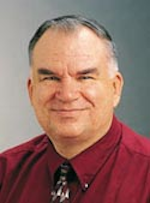Varied plays alter US Lower 48 exploratory landscape
Oil and wet gas plays of all types are revitalizing basins, reducing unemployment, stressing demand for rigs and other services, and reversing production declines in the US onshore Lower 48, speakers said Wednesday at a session leading up to the Summer NAPE exposition in Houston.
Conventional and unconventional plays, vertical and horizontal, in shales, carbonates, tight oil formations, and other pay zones are causing dramatic changes in the way companies rank what for years was a mature province that led them to look outside the US for economic exploration opportunities.
Since Jan. 1, 2009, 1,151 Bakken horizontal wells in the Williston basin had combined initial potential test rates of more than 1 million b/d, more than the collective initial test value from 17,800 vertical oil wells drilled in the US in the same period, said Pete Stark, vice-president of industry relations, IHS CERA, which sponsored the kickoff session.
IHS, Stark said, has estimated that the Bakken play will be yielding 800,000-1 million b/d by 2018, but the play is already ahead of the production curve needed to reach that range.
A number of plays besides the Bakken are "getting ready to take off" in the Williston basin, said Roger Pinkerton, Marathon Oil Corp. North American onshore director exploration, although he didn't specify. Marathon has important acreage positions in the Bakken, Niobrara, Anadarko Woodford, and Eagle Ford plays.
The South Texas Eagle Ford play has 169 rigs running, initial rates average 500 b/d/well of oil alone, production has grown to 125,000 b/d from nil in 15 months, and ultimate recovery is estimated at 2 billion to 9 billion bbl of oil and 40 tcf of gas plus liquids, Stark said.
Petrohawk Energy Corp., which started the Eagle Ford play and is being acquired by BHP Billiton Petroleum, said it owns 1,300 sq miles of 3D seismic, most of which it caused to be shot, that has helped it pinpoint drilling locations.
Charles Cusack, Petrohawk vice-president exploration, said the type curve for Hawkville field is 5 MMcfd of gas and 613 b/d of condensate, with an EUR of 2.5 bcf and nearly 500,000 bbl of natural gas liquids in the gas-condensate window, which represents half the total play.
Drilling to numerous formations in the Permian basin, meanwhile, has reversed a decades-long oil production decline and added 75,000 b/d of output in the last 3 years, said Stark.
Apache Corp.'s Permian Region is exploiting numerous conventional plays and has just drilled its second horizontal well in the Cline shale in Glasscock County, Tex., between the Wolfcamp and Strawn formations, said John Christmann, region vice-president.
At 92,000 b/d of oil equivalent, 70% liquids, Apache's output is second only to that of Occidental Petroleum Corp. in the basin, Christmann said. Only 23 wells account for 5% of the Apache region’s production.
Apache estimates that it has 5,000 locations, a number of which are stacked horizontal targets, to drill in the Permian, where it has grown by a combination of drilling and acquisitions.
Christmann sees limiting factors in obtaining people--Apache's region has grown to 650 already--slowness of obtaining federal permits in New Mexico, and coordinating rigs and frac crews. Apache is handling more than 1 million b/d of water in the basin, he added.
Gas processing takeaways can be constraints, and Apache has arranged to ship natural gas liquids by rail to Louisiana until its Deadwood Wolfcamp gas processing joint venture takes shape.
Apache will soon drill the first well since 1984 in redeveloping the Empire Abo Unit, which has cumulative production of more than 200 million bbl of oil.
Ethane represents a hidden asset in the Pennsylvania Marcellus play, which has the potential to become the world's second largest gas field, said Alan Farquharson, senior vice-president reservoir engineering, Range Resources Corp.
Farquharson said Range estimates that it has 500 million bbl of recoverable ethane on its southwestern Pennsylvania lease position that it plans to begin extracting in late 2013.

Alan Petzet | Chief Editor Exploration
Alan Petzet is Chief Editor-Exploration of Oil & Gas Journal in Houston. He is editor of the Weekly E&D Newsletter, emailed to OGJ subscribers, and a regular contributor to the OGJ Online subscriber website.
Petzet joined OGJ in 1981 after 13 years in the Tulsa World business-oil department. He was named OGJ Exploration Editor in 1990. A native of Tulsa, he has a BA in journalism from the University of Tulsa.
